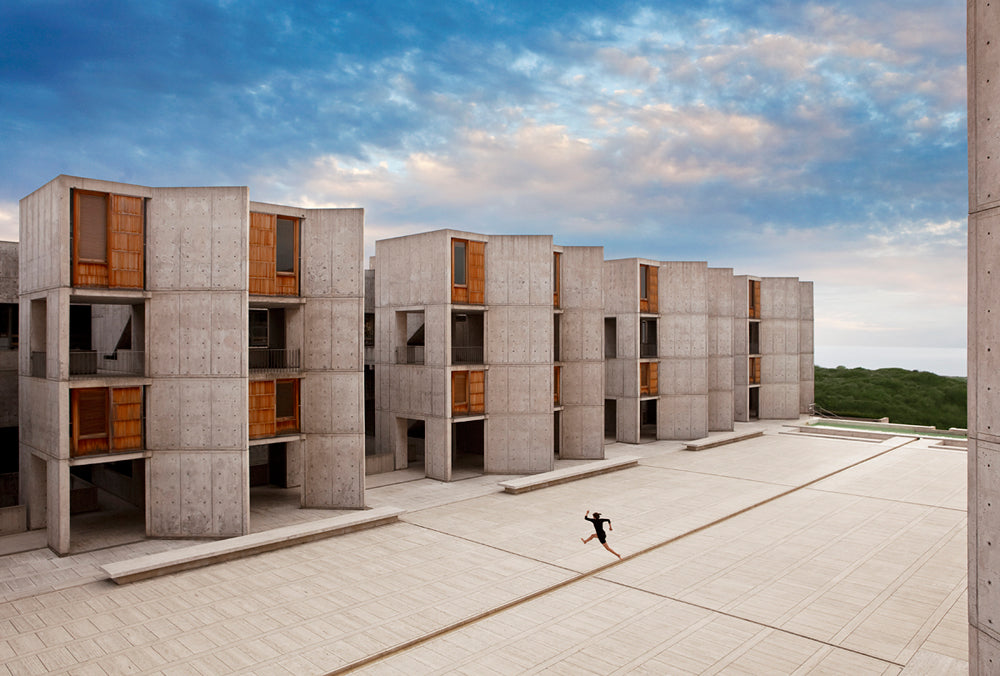Joshua Caldwell (www.joshuacaldwell.com) was born in Colorado in 1975. He studied art and architecture at the University of Utah, being awarded a BFA in 2003. Joshua attended graduate school at Brooks Institute of Photography in Santa Barbara, California. In 2008, Joshua completed his thesis on the Polaroid SX-70 camera and its influence on fine art photographers. He graduated in 2008 with an MS in photography. Joshua now lives in the Phoenix, Arizona area with his wife and two children where he works as a freelance commercial architectural and fine art photographer. He also teaches as an adjunct faculty member in the art department at Chandler Gilbert Community College in Chandler, AZ as well as for the Art Institute of Pittsburgh Online Division.
KNOWING THE STRUCTURE
Joshua: "I find getting to know a structure first is the most important aspect of architectural photography. I spend a great deal of time walking around the exterior and interior looking at the details that make up the whole. I often keep notes or drawings or snap shots so I can remember what I found interesting.
"I also try to find the interesting angles that show off the design of the project. Many times this requires getting up high or down low. I have found myself shooting anywhere from mountaintops to the rooftops of a neighboring structure just to change my perspective. The latter can take some convincing of the client and the neighbors, but it is well worth the effort. I also use a ladder to mount my camera to on occasion. This will allow me to bring in background elements like mountains that describe structures surroundings.
ARCHITECTURE IS STILL ABOUT LIGHT
"Lighting is of course is key. Mastering the use of natural light and artificial light and adding my own lights to enhance what is already there is important. This can be challenging to balance but really makes or breaks an image. I use both tungsten lights and strobes lighting depending on what time of day I am shooting. I also have a great deal of light modifiers and tools I have made to help in certain situations. You don’t always have to have expensive lights. You can do a lot with a few clamp lights from the hardware store. Planning around the best possible lighting is important. I try to know where the sun is going to be at any given time of the day. I check the sunrise and sunset times as well as the civil twilight times. Civil twilight describes the time when the sun's glow is visible either in the morning before sunrise or at night after sunset. I find somewhere between civil twilight and sunrise or sunset you get that perfect mix of light. Of course every project is different, sometimes it happens a bit sooner or later, so you have to be ready and flexible.
KNOW YOUR EQUIPMENT
"Knowing the technical aspects of the camera is so important! Understand how the lens works, like what aperture combined with your focal length gives you enough depth of field for the scene. This helps give you detail from foreground to background. Use a good sturdy tripod as well. I use a cable release or remote as well as setting the mirror lock up function. This allows the camera to expose in two steps. The first press of the shutter allows the mirror to move up an out from in front of the digital sensor or film. The second press of the shutter exposes the shot. This eliminates a small amount of movement when shooting and gives you a sharper image.
"I think no matter what type of photography you do, capturing the best possible file when shooting is so important. Don’t rely on Photoshop. Photoshop is a great tool but beginning editing with a sharp, well lit and exposed photograph makes a big difference!"
Stay connected to Joshua: Website
RELATED ARTICLES
How I Got That Shot - Will Pryce
Dawn Kish's Editorial Work for Arizona Highways
Eric Meola: Travel Images Since "The Last Places on Earth"





